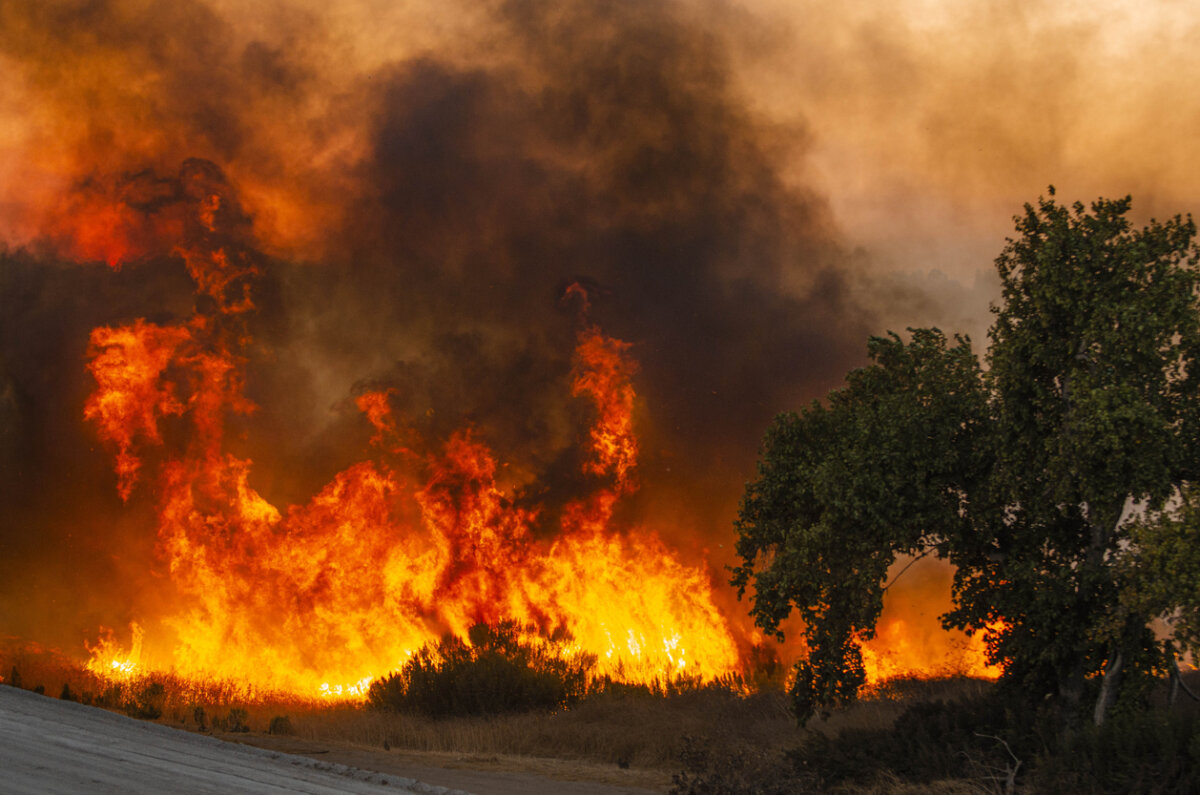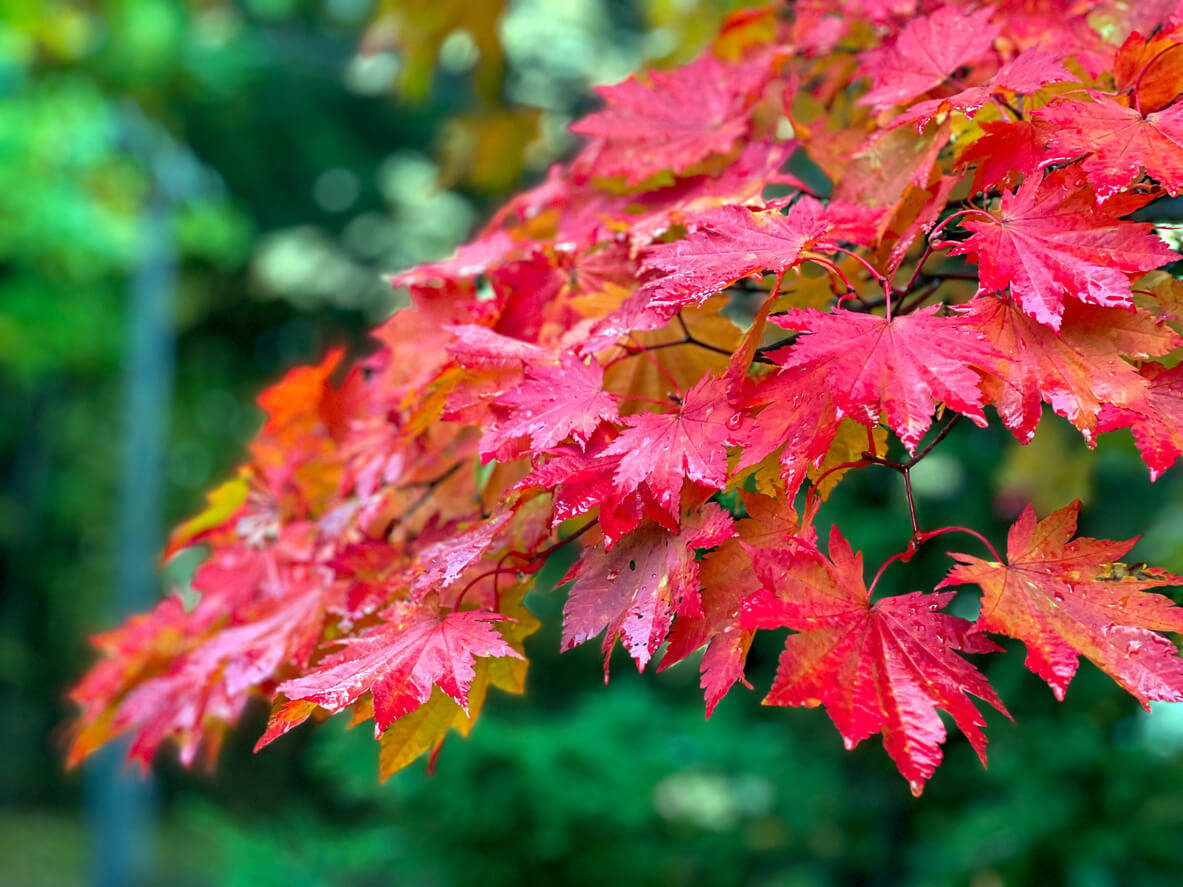
We are not immune from wildfires in western Washington. Here are tips on how to prepare your home for wildfires. Kevin Lendio photo.
The wildfires in southern California have been devastating to communities and heartbreaking to homeowners. Our hearts go out to people in Pacific Palisades, Altadena and the other ravaged communities.
Firefighters from Washington state have been helping fight the fires. Communities around the state have sent 55 engines and about 220 firefighters, and the Washington Department of Natural Resources sent about 80 additional firefighters, according to the Seattle Times.
As the climate changes, wildfires pose a greater hazard, and that includes western Washington. “Extreme wildfires have doubled in frequency and magnitude,” Hilary Franz recently wrote on LInkedIn. Franz just stepped down as Washington State Commissioner of Public Lands. “And the last few years, it’s clear that no one is immune from these wildfires.”
Franz emphasized the importance of preparedness, especially for western Washington residents. “We do need to now focus on our west side of the state where we have higher population centers and a lot more fuel,” Franz told NEWS4SA.
Historically, the number and extent of wildfires have been higher in eastern Washington. But in 2022 there was a notable shift. Over half of forested acres burned that year were in western Washington: 53,600 in western Washington vs. 48,000 acres in eastern Washington, according to the Department of Natural Resources. In addition, western Washington experienced more low-severity fire (48% of total) than eastern Washington (39% of total).
How to prepare for wildfires
Wildfires are no longer contained to dense, forested areas, said KING5 News. They are now threats to homes in suburban and urban environments, as evidenced by the LA fires. Here are tips on protecting your home and preparing for wildfires from Ready.gov, the Washington State Office of the Insurance Commissioner, the Federal Emergency Management Agency (FEMA) and Washington State Magazine. Most of the information below is from Ready.gov.
Make an emergency plan
- Make sure everyone in your house knows and understands what to do if you need to quickly evacuate.
- Don’t forget a plan for the office, kids’ daycare and anywhere you frequent.
Review important documents
- Make sure your insurance policies and personal documents, like ID, are up to date and you have coverage for all of your valuables.
- Make copies and keep them in a secure password-protected digital space.
- Create an inventory list of your valuables digitally or on video. This will be helpful in the event of wildfire damage.

Fire-resistant plantings will make your home and yard more resilient. Maple trees are one good option.
Strengthen your home and yard
- Create a fire-resistant zone that is free of leaves, debris or flammable materials for at least 30 feet from your home.
- Find an outdoor water source with a hose that can reach any area of your property.
- Use fire-resistant materials to build, renovate or make repairs.
- Locate a clean room inside your home that can be sealed off from smoke. Set up a portable air filter to keep a safe breathing space.
- Clean pine needles, leaves and debris from your roof, gutters, decks and yard.
- Relocate shrubs and trim trees that touch the house.
- Relocate wood piles. Keep them at least 30 feet away from your home. Keep flammable vegetation 10 feet away from woodpiles.
- Prune or remove trees that are overcrowded or weakened. Prune low-hanging branches to keep a ground fire from climbing into upper branches.
- Replace highly flammable plants with varieties that are fire resistant, with a high moisture content. Find out more:
- Fire-resistant plants for the Puget Sound basin, King County
- Fire-resistant plants for home landscapes, OSU Extension
- List of the most fire-resistant plants, Western Fire Chiefs Association
Know your evacuation zone
- You may have to evacuate quickly due to a wildfire. Learn your evacuation routes, practice with your household and identify where you will go.
- Follow the instructions from local authorities. They will provide the latest recommendations based on the threat to your community and appropriate safety measures.
Gather supplies
- Have enough supplies for your household, including a first aid kit, in your go bag or car trunk.
- Being prepared allows you to avoid unnecessary excursions and to address minor medical issues at home, alleviating the burden on urgent care centers and hospitals.
- Remember that not everyone can afford to respond by stocking up on necessities. For those who can afford it, making essential purchases and slowly building up supplies in advance will allow for longer time periods between shopping trips.
- Be cautious when carrying flammable or combustible household products that can cause fires or explosions if handled wrong, such as aerosols, cooking oils, rubbing alcohol and hand sanitizer.
- If available, store an N95 mask to protect yourself from smoke inhalation.
- Keep your cell phone charged when wildfires could be in your area. Purchase backup charging devices to power electronics.
Stay safe during a fire
- Pay attention to emergency alerts and notifications for information and instructions.
- Evacuate immediately if authorities tell you to do so!
- Check with local authorities for the latest information about public shelters or check open locations on the FEMA app. You can also download the free Red Cross Emergency app for a list of open Red Cross shelters in your area.
- Consider making plans with friends or family to shelter with them where you may be safer and more comfortable.
- If trapped, call 9-1-1 and give your location, but be aware that emergency response could be delayed or impossible. Turn on lights to help rescuers find you.
- Use an N95 mask to protect yourself from smoke inhalation or limit your exposure to smoke by doing the following:
- Choose a room to close off from outside air and set up a portable air cleaner or filter to keep the air in this room clean even when it’s smoky in the rest of the building and outdoors.
- Use high efficiency filters in your central air conditioning system to capture fine particles from smoke. If your system has fresh air intake, set the system to “recirculate” mode and close the outdoor intake damper.
- If you are not ordered to evacuate but smoky conditions exist, stay inside in a safe location or go to a community building where smoke levels are lower.
- If you are sick and need medical attention, contact your healthcare provider for further care instructions and shelter in place, if possible.
Returning home after a wildfire
- Do not return home until authorities say it is safe to do so.
- Avoid hot ash, charred trees, smoldering debris and live embers. The ground may contain heat pockets that can burn you or spark another fire.
- When cleaning up, wear protective clothing – including a long-sleeved shirt, long pants, work gloves and sturdy thick-soled shoes.
- Use a respirator to limit your exposure, and wet debris to minimize breathing dust particles. People with asthma, COPD and/or other lung conditions should take precautions in areas with poor air quality, as it can worsen symptoms.
- Document property damage with photographs. Conduct an inventory and contact your insurance company for assistance.
- Send text messages or use social media to reach out to family and friends. Phone systems are often busy following a disaster. Make calls only in emergencies.
More info and resources
- Ready.gov has additional resources, including information on improving individual and community wildfire resilience, survivor videos and more.
- The National Fire Protection Association has information about home ignition zones (starting next to the home and expanding outward) and what to do in each zone to protect the home from fires.
- The Washington Department of Natural Resources offers information on wildfire prevention, including how to use landscaping equipment safely in dry conditions.
- Some counties in Washington are eligible for Wildlfire Ready Neighbors, which provides a free consultation and Wildfire Ready Plan. While most are in eastern Washington, several western Washington counties, including Pierce and Thurston, are part of the program.

Thank you